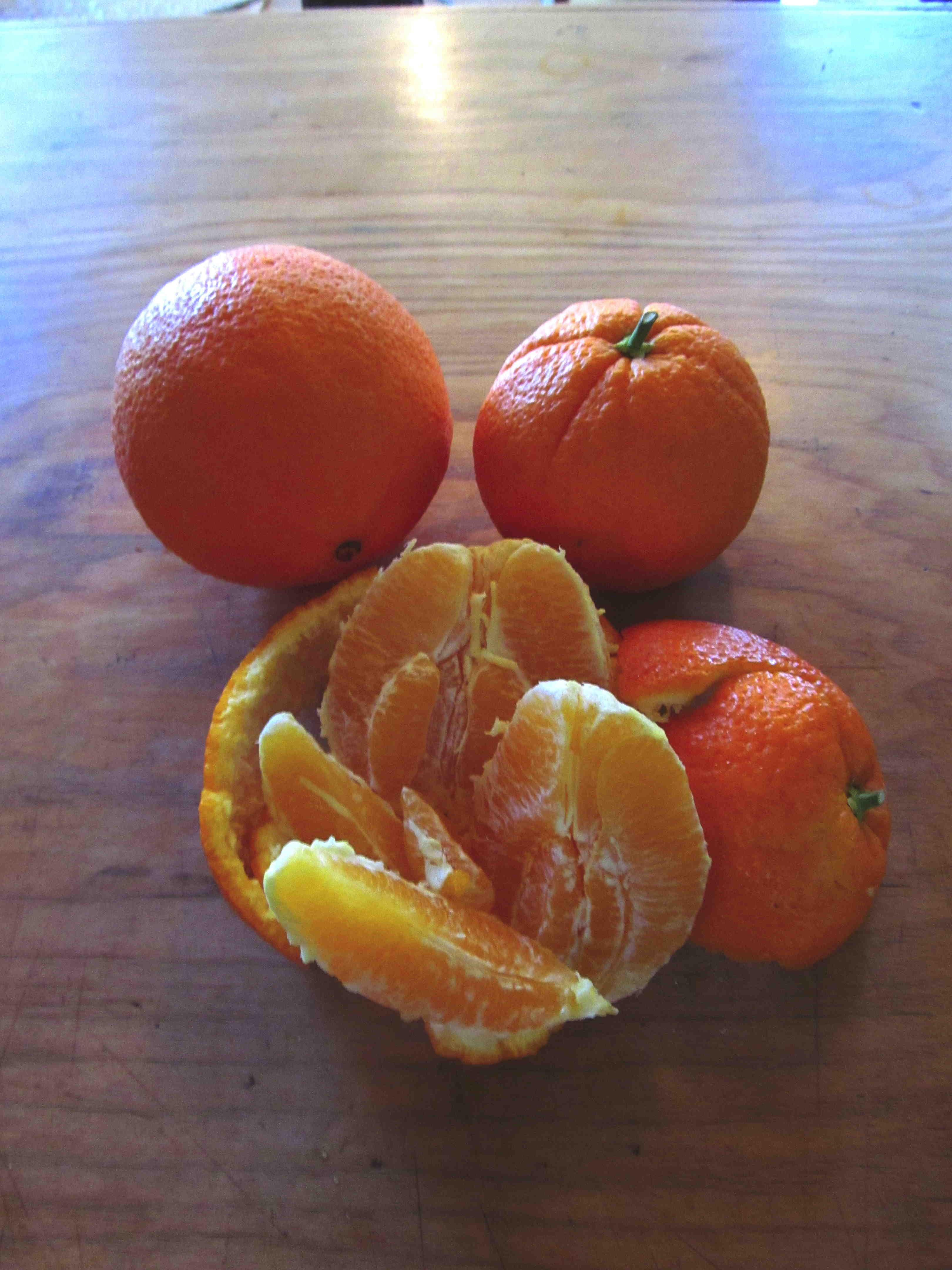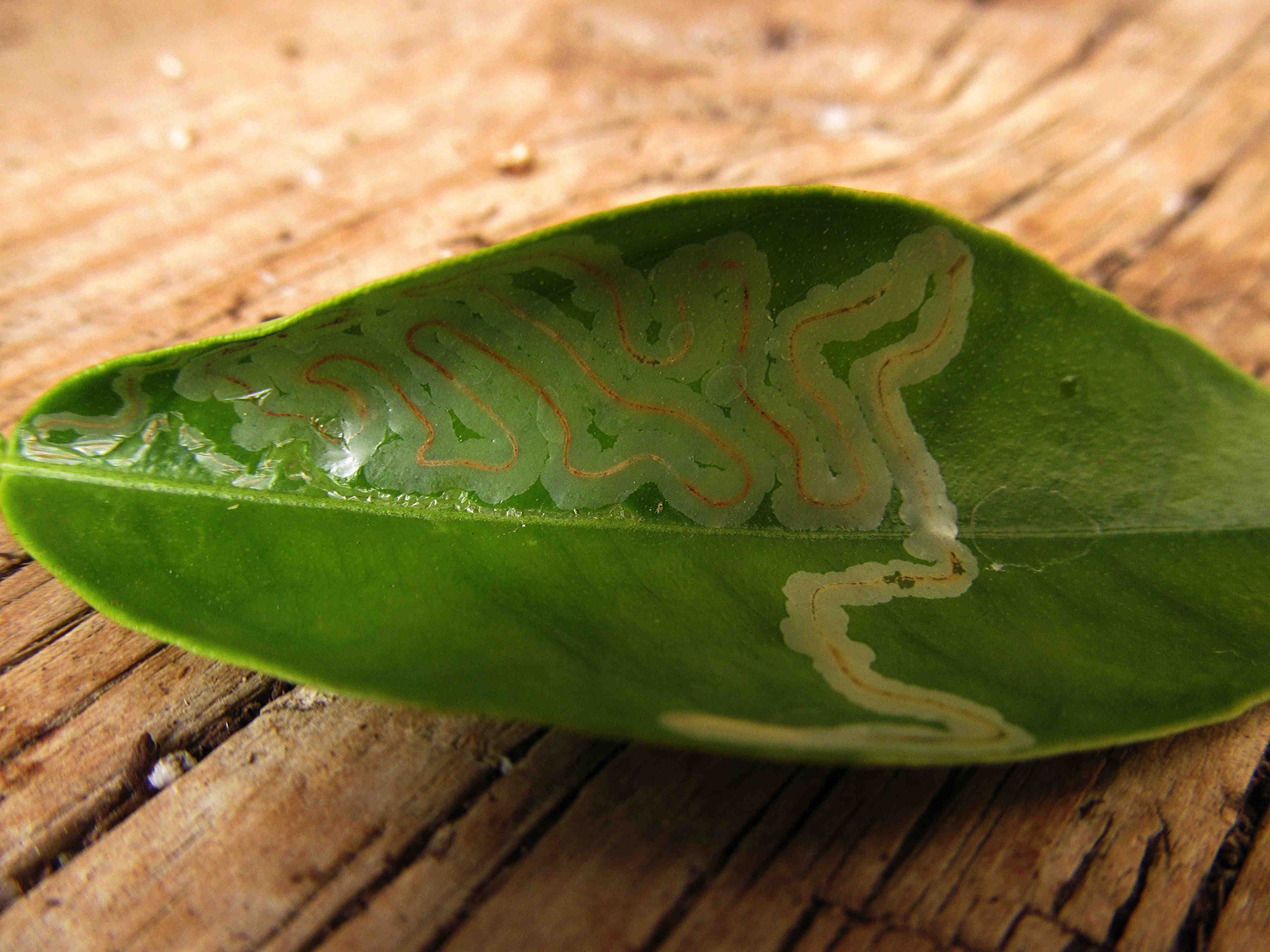Citrus in your garden and in the news
Written for the Davis Enterprise, February 26 2015
While our relatives are digging out from one snowstorm after
another, California gardeners are enjoying mandarins and oranges. The main
season for citrus is winter, but there are dozens of types available to spread
out the harvest. With the first varieties harvested in November, and some such
as Gold Nugget mandarins and Valencia oranges holding well into the summer,
citrus trees can provide fruit much of the year here.

Citrus are
low-water fruit trees, using 35% less water than a lawn under optimal irrigation
(the official way of saying that is that ETc = 0.65 in the Sacramento Valley).
Established citrus trees are capable of withstanding even greater drought while
still providing adequate back yard yields. I have Owari Satsuma mandarin trees
on my farm that get watered just once a month in the summer and still bear good
yields of excellent fruit.
Find a sunny location. As my friends at Four Winds Growers
say, "where the cat sleeps in the sun, citrus grows well."
Water deeply and infrequently, and apply fertilizer
seasonally to younger trees to keep the leaves deep green and sustain two to
three feet of growth a year. Smaller
types such as kumquats, Meyer lemons, Rangpur limes, calamondins, and mandarins
are great in containers. Citrus can be planted any time the weather is
warm.
Citrus misconceptions: the disease, the bugs.
While citrus trees are relatively pest free, there are
always new pests that threaten our state's citrus industry. Intermittent news
coverage leads to comments like this one I fielded recently.
"I've heard that citrus disease is all over the state now."
So just to clarify....
There is a disease that is killing citrus trees in Florida.
There is an insect that spreads that disease. The disease is not in
California. The insect is. If the disease gets into California, the
insect will spread it from tree to tree, and once a tree is infected it can't
be cured. It has to be destroyed. So we want to keep the disease from entering
the state, and we want to try to prevent further spread of the insect that is
already here.
The disease, HLB virus (Huanglongbing virus, or "citrus
greening") has wrought havoc in citrus groves in Florida. Juice production in
Florida has dropped by about 1/3, with a hit to the state of $4 – 5
billion.
HLB has only been found in California on one tree, an orange
tree in Hacienda Heights (in the Los Angeles area) in 2012. That tree was
destroyed and the area has been monitored. The disease is only spread by one
insect, which we call the vector: the Asian citrus psyllid (pronounced sill
– id) The most common way the psyllid spreads is by people moving plants
or fruit that are infested.
There are some other plants than citrus that host the
psyllid. So the California Department of Food and Agriculture manages a quarantine
on the movement of certain plants out of areas known to be infested. The USDA
routinely intercepts host plant materials being sent in to California from out
of state and from out of the country.
DO NOT bring citrus trees, leaves, branches, flowers, or
fruit from a quarantine area. That includes much of Southern California and
certain counties in Central California. The nearest recent finds of the Asian
citrus psyllid are Lodi and Manteca, where one psyllid was found in each
location, so the quarantine has been expanded to those areas.
Presently there are four main parts to the strategy for
managing this disease:
*
Quarantines on the movement of
plants that host the insect that transmits the disease.
*
Insecticides to control the
pest.
*
Research and development of trees
that are resistant to the disease.
*
Biological control of the insect
vector via introduction of beneficial natural enemies.
Quarantines are established on nurseries, growers and
homeowners by the Dept. of Food and Agriculture, enforced by the county
agricultural commissioner. They do have broad powers to manage pests on trees,
even in your yard.
Shipments of citrus trees that come from quarantine areas
are inspected at the grower's yard, and at the retail nursery before they are
put out for sale. Quarantines can work, though they impose costs on the
industry and are not foolproof. Nurseries are very cooperative, in part because
CDFA and the USDA can shut us down if we aren't.
But the most common source of pest introduction is by people
who don't know about the quarantines or don't take them seriously. When you're
visiting Aunt Minnie in LA, and she gives you a bag of her delicious oranges to
take home with you, do you go online to check the maps of the quarantine areas?
Probably not. So best advice is simply not to move citrus trees, leaves,
flowers, or fruit from one area to another within, or into, the state. Take
your juicer and bring home the juice in a thermos.
The insecticides most commonly used by commercial growers
are neonicotinoids, including imidacloprid, on younger trees, and foliar
applications of various insecticides on older trees. The first group are
systemics that go into the plant and kill the pest while it feeds on the tree.
They're not great for pollinators. Organic growers have to use sprays that kill
the insect by contact or by smothering them, so they must do repeated
applications of organic-approved pesticides through the season.
Genetic engineering is being used to create varieties of
citrus that are resistant to HLB. Virologists have found genes in spinach which
provide resistance that they have transferred into citrus, and the first trees
from that were being field tested in Florida as of 2011. They are not immune,
so this is not a panacea, and it takes a long time to get from research to
field test to propagation, production, and yield. Any genetic solution is a few
years away, and consumer resistance to genetically engineered crops is a
concern to the industry.
Several species of tiny parasitic wasps are being released
and show good promise for suppressing the population of psyllids to manageable
levels. With biological control, you never really know what the field results
are going to be: whether the new insect will establish, overwinter, and whether
it will be sufficient to reduce damage from the pest to economically-acceptable
levels.
Citrus leaves looking funky?
All of the discussion above has nothing to do with the
curling and distortion of the leaves you are seeing on your citrus trees. That
is from a leafminer that arrived in California in 2008 and has gradually spread
throughout citrus growing regions of the state. Nearly every tree I look at has
some damage on the late-summer growth. The
larva tunnels underneath the epidermis, leaving a distinctive pattern and
causing the leaves to curl.

It is not harming the tree and doesn't get into the fruit,
so no control measures are necessary.
This pest problem will likely solve itself naturally. From
UC ANR Publication 74137:
"In other areas of the world where the citrus leafminer
invasion is long established, the experience has been similar: a high level of
damage to citrus in the first year or two is followed by decreasing severity
due to natural enemies parasitizing or consuming leafminers. ... Eventually, the
leafminer populations decline as the population of natural enemies increases."
It's always great when nature sorts itself out for us.
Further reading:
*
More on the citrus greening, and information about some of the
other areas of research underway, here is a recent article in National
Geographic: http://news.nationalgeographic.com/news/2014/09/140914-florida-orange-citrus-greening-gmo-environment-science/
*
And here is some info from the USDA: http://www.hungrypests.com/faqs/asian-citrus-psyllid.php
*
Citrus leafminer: http://www.ipm.ucdavis.edu/PMG/PESTNOTES/pn74137.html
*
Citrus quarantines as of March 2015: http://citrusinsider.org/2015/03/additional-asian-citrus-psyllid-detections-in-tulare-county-expand-quarantine-further-into-fresno-county/
